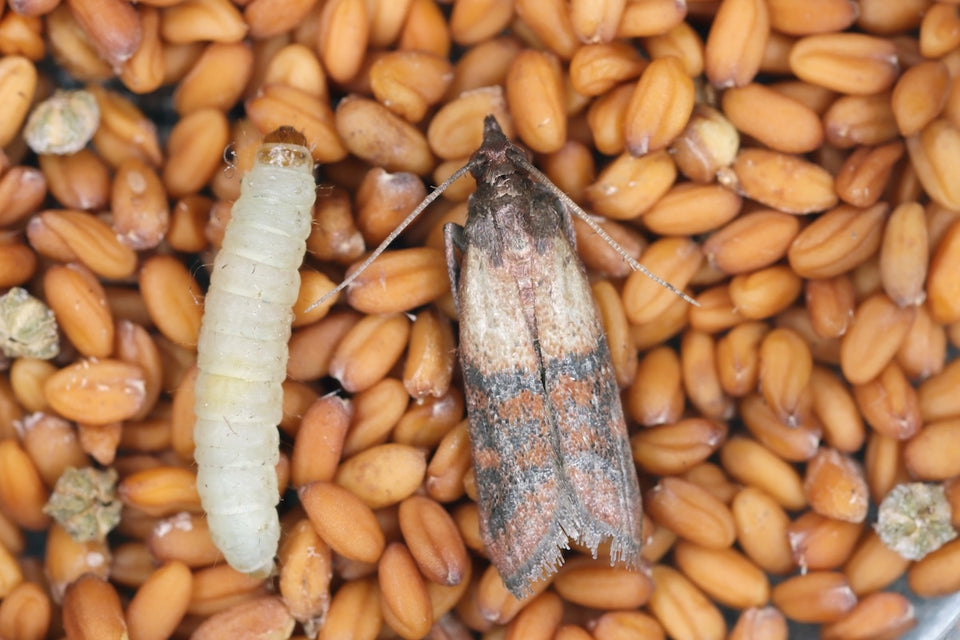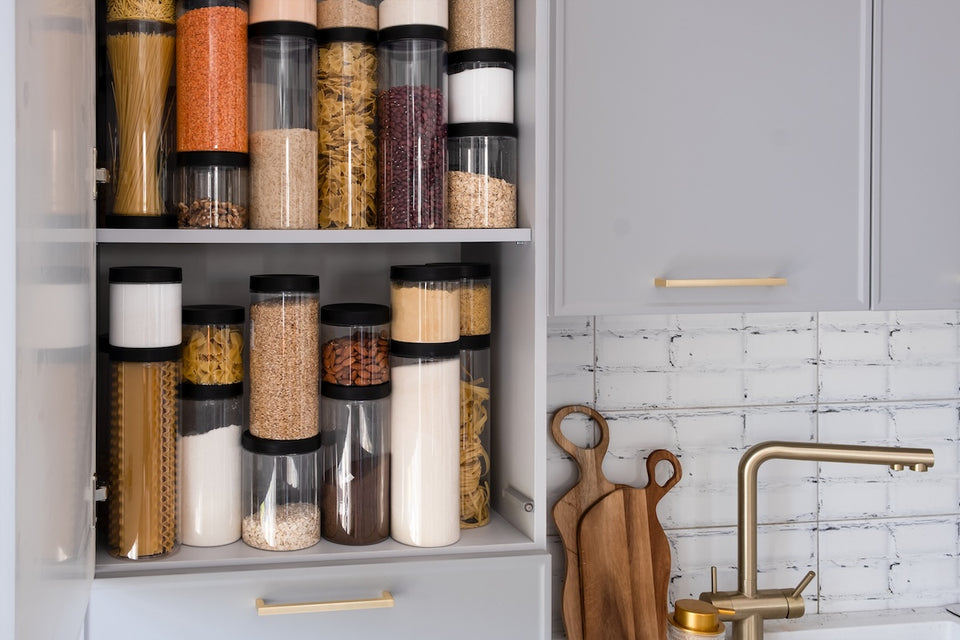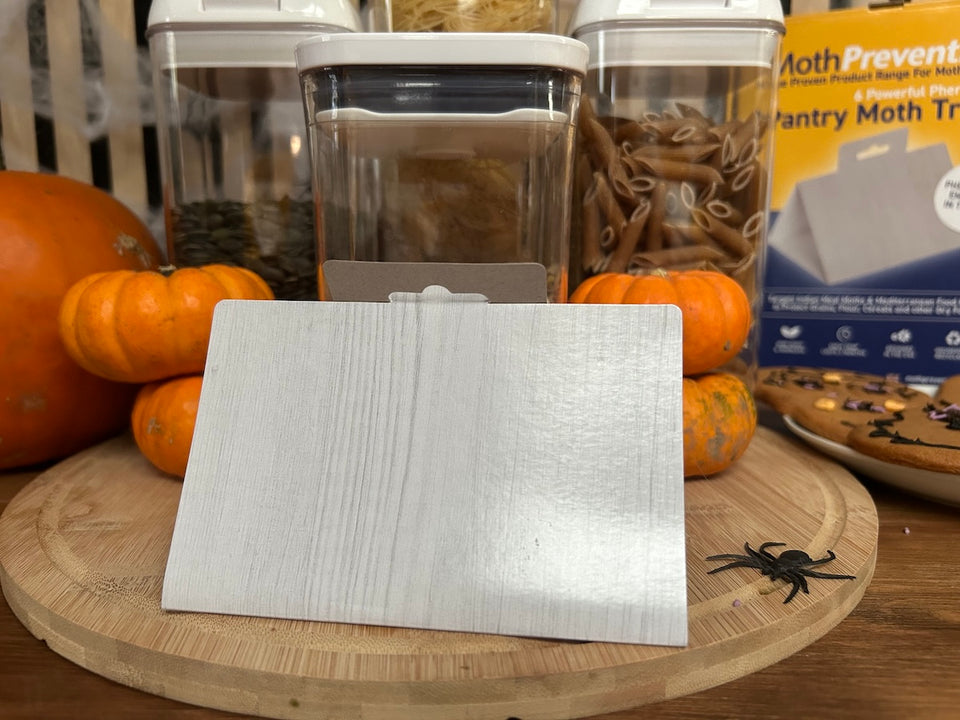When Pantry Moths Haunt Your Cupboards

As Halloween approaches, most of us expect ghosts, ghouls, and creepy crawlies to appear — but one of the most unwelcome visitors at this time of year is far less obvious. The Pantry Moth can quietly turn your cupboards into a real-life horror story.
These small, fluttering insects may not look threatening, but the real problem lies with their larvae. While you’re stocking up on fall treats, baking ingredients, and Halloween snacks, Pantry Moths are looking for the same thing: a warm, quiet place filled with dry, undisturbed food supplies.
Once established, these pests can be surprisingly persistent. Even the cleanest kitchens can fall victim to a Pantry Moth infestation because adult moths often enter homes through packaging from supermarkets or bulk food stores. It only takes one unnoticed packet to bring in a problem that can quickly spread across your entire cupboard.
What Pantry Moth Larvae Feed On
Pantry Moth Larvae thrive on a wide range of dry goods, particularly those stored in warm, dark cupboards. Their favorites include:
- Flour and grains
- Rice, pasta, and cereals
- Nuts and seeds
- Dried fruit
- Cookies, crackers, and baking mixes
- Chocolate
- Pet food, bird seed, and even dry herbs or spices

Once they find an open packet or unsealed jar, adult Pantry Moths lay eggs near or inside the food source. Within days, tiny Pantry Moth Larvae hatch and begin feeding. They leave behind fine silk webbing, small droppings, and a distinctive musty smell that often signals an infestation.
Because they feed on so many everyday staples, it’s easy for Pantry Moth Larvae to move from one container to another, contaminating multiple ingredients in a short period of time. By the time you notice the first adult moth fluttering near your ceiling, the larvae are usually already well-established.
How to Recognize a Pantry Moth Infestation
The first sign of an infestation is often the sight of small brownish-grey moths flying near cupboards, pantries, or even light fittings. These are adult Pantry Moths searching for new places to lay eggs.
Other tell-tale signs include:
- Fine webbing or clumps in flour, cereal, or other dry goods
- Small caterpillar-like larvae moving in food or around packaging
- A stale, musty smell inside storage containers
- Sticky residue or powdery build-up on shelves

If you notice any of these, act quickly. The longer Pantry Moth Larvae have access to your food, the more difficult it becomes to get rid of them completely.
Why It’s Important to Protect Your Dried Foods
A single overlooked packet of flour or a bag of rice can lead to weeks of frustration. Pantry Moth infestations can spread quickly because the larvae crawl between nearby food sources, often squeezing through the smallest gaps in packaging.
Aside from wasted ingredients and the inconvenience of cleaning up, infestations can easily re-establish themselves if contaminated food isn’t completely removed. Even one missed source can restart the cycle, leading to another wave of moths a few weeks later.
With the consistent warmth of modern kitchens, Pantry Moths don’t just appear in summer. They can remain active throughout the colder months, particularly in homes with central heating, meaning autumn and winter infestations are now just as common.
Preventing an infestation is far easier than clearing one. By protecting your dry goods properly, you’ll safeguard your food, reduce waste, and stop these persistent pests from taking hold in your home.
How to Store Dried Foods Safely
You don’t need harsh chemicals to prevent a Pantry Moth problem. A few simple, consistent habits will make your kitchen far less inviting to these unwanted guests.
-
Inspect before storing
Check all dry goods — especially bulk purchases or paper-bagged items — for any signs of webbing, clumping, or crawling larvae before placing them in your cupboard. Pantry Moth Larvae often arrive in packaging straight from the store. -
Seal everything tightly
Transfer foods into airtight glass or hard-plastic containers. Thin packaging like paper or cardboard offers little protection, and even resealable bags may not be secure enough. Properly sealed containers block access for Pantry Moths and keep ingredients fresher for longer. -
Clean regularly and thoroughly
Empty and wipe your shelves every few months using a cleaning solution. Vacuum corners, seams, and screw holes where eggs can cling unnoticed. Dispose of vacuum bags immediately after cleaning to prevent re-infestation. -
Use Pantry Moth Traps
Pheromone traps are one of the most effective and chemical-free ways to monitor for activity. They attract and capture adult male Pantry Moths, breaking the breeding cycle and revealing early signs of an infestation. Place traps in or near cupboards containing dry foods, and replace them every 8 weeks for ongoing protection.

-
Rotate your stock
Use older ingredients first and avoid storing large quantities for long periods. Pantry Moth Larvae prefer still, undisturbed food sources, so regularly rotating stock makes it harder for them to establish themselves. -
Check pet and bird food too
Pet food and bird seed are frequent hiding places for Pantry Moths. Consider freezing them for up to 72 hours before using in order to guarantee that they are free from any unwanted visitors. Store them in sealed tubs away from your main pantry, and don’t leave open bags sitting for long periods.
A Treat not a Trick
This Halloween, make sure the only things hiding in your kitchen are your favorite sweets - not Pantry Moth Larvae. While these pests may be tiny, they can quickly turn a cosy fall evening into a kitchen clean-out.
By sealing your dried foods, cleaning regularly, and using Pantry Moth Traps year-round, you’ll keep your cupboards safe and your ingredients fresh. Pheromone traps are an easy, chemical-free way to stop adult male Pantry Moths from breeding and help you spot problems before they spread.
So as you prepare for pumpkin carving, baking, and Halloween festivities, give your cupboards a quick check too. Because the only surprise you want in your kitchen this season should come in a trick-or-treat bag - not from an uninvited guest.

About MothPrevention
MothPrevention® speak to customers every day about their clothes moth issues - clothes moths are a species that are ever increasing and that can cause significant damage to clothes, carpets and other home textiles.
To date, we’ve helped over 250,000 customers deal with their moth problems. We have developed professional grade solutions including proprietary pheromones and trap design, not available from anybody else in the USA.





